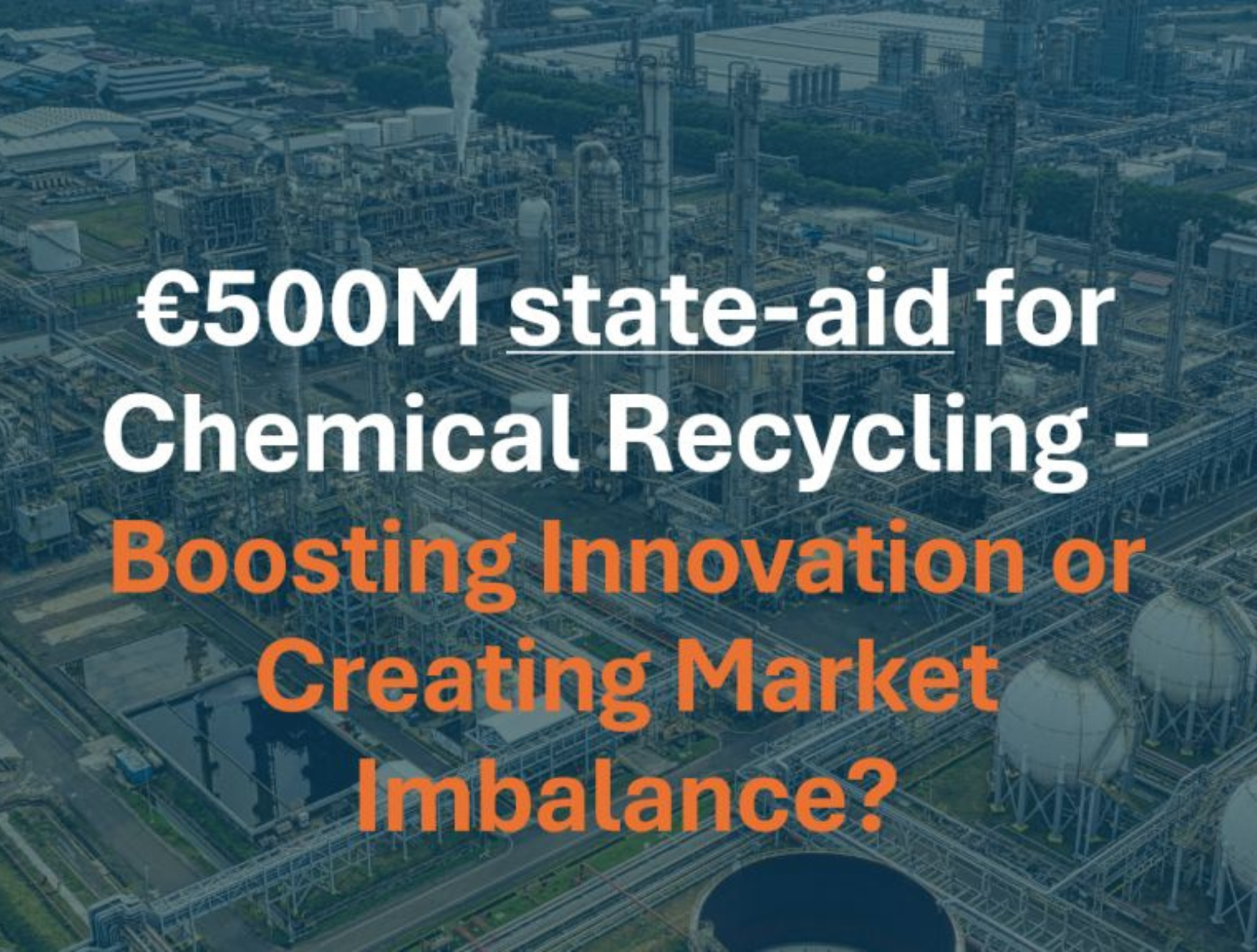Investing in Chemical Recycling: One important technology in the mix of solutions for plastics recycling in the EU.
The European Commission’s recent approval of a €500 million French state aid scheme marks a significant milestone in supporting chemical recycling within the EU. Aimed at boosting the recycling of complex plastic waste through innovative technologies, the scheme was approved under the EU’s Climate, Environmental Protection and Energy Aid Guidelines (CEEAG). By endorsing this approach, the Commission has effectively set a precedent—offering a regulatory blueprint that other Member States can follow if they wish to accelerate their own circular economy transitions. But while this marks progress, it also raises a number of important questions about coordination, fairness, and the best path forward for EU recycling policy.
Should Other EU Countries Follow France’s Lead?
France’s move demonstrates that national governments can successfully design and notify major environmental support schemes under EU rules. While there is no obligation for other Member States to follow suit, the French example could encourage similar initiatives—particularly in wealthier countries with the fiscal capacity to finance green industrial transformation.
However, this case also highlights the risks of an uncoordinated EU approach. Without a common framework or pooled funding strategy, Member States may compete in a subsidy race, leading to market distortions and unequal access to recycling infrastructure across the bloc. A more harmonised, EU-wide strategy could ensure fairer outcomes and help smaller or less wealthy countries keep pace in the green transition.
Why Focus Solely on Chemical Recycling?
The French scheme exclusively supports chemical recycling technologies—processes that break down plastics into their molecular components for reuse. While promising for hard-to-recycle materials, chemical recycling remains controversial due to its high energy demands, scalability challenges, and uncertain climate impacts.
More importantly, it represents just one approach in a broader toolbox. Mechanical and solvent-based recycling technologies are already widely used and can be more resource- and energy-efficient in many cases. A technology-neutral strategy would allow Member States to allocate funding based on performance, environmental impact, and context—ensuring the most effective mix of solutions for managing diverse plastic waste streams.
Is the Recycling Industry Too Dependent on Subsidies?
A key reason the Commission approved the French scheme was the assessment that, in the absence of public support, companies would not pursue chemical recycling projects. While this reflects the real economic barriers facing emerging technologies, it also points to an uncomfortable trend: the increasing dependence of the recycling industry on public subsidies.
Rather than using state aid as a long-term crutch, EU policy should also focus on addressing the root causes of this dependency. That means improving demand-side incentives, internalising environmental costs (e.g. through Extended Producer Responsibility schemes), and fostering markets for recycled materials. Public money should enable innovation—not compensate for market failure indefinitely.
Isn’t the PPWR Already a Strong Investment Signal?
The upcoming Packaging and Packaging Waste Regulation (PPWR) includes ambitious new rules on recyclability, reuse, and minimum recycled content. These measures are designed to reshape packaging markets and drive private investment in recycling infrastructure.
This raises the question: if the regulatory direction is clear, is public support still necessary? The Commission argues yes—for now—citing the gap between regulatory intent and actual market readiness. But long term, the goal should be to let well-designed regulations and strong market signals do the heavy lifting, reducing reliance on taxpayer-funded interventions.
Are We Asking the Right Questions?
France’s €500 million scheme has opened the door for further public support of advanced recycling in the EU. It sends a strong message that the Commission is willing to back Member States pursuing green innovation. But it also raises deeper concerns: Is support being directed to the most effective technologies? Are we ensuring fair access across Member States? And is public funding crowding out private initiative?
As the EU scales up investment to meet its climate and circularity goals, it must ensure that support is strategic, equitable, and forward-looking. A coordinated, tech-neutral, and market-driven approach will be critical to building a resilient and sustainable circular economy.




